The Charis House challenge comes before the Fort Wayne City Council tonight for a vote on their request to vacate a good portion of Fairmount Place. Over the last few weeks, the controversy has heated up with both sides passionately presenting their cases.
In the meantime, in Saturday’s Journal Gazette, a Letter to the Editor appeared that was written by Tuck Hopkins, Chair of the Fort Wayne Rescue Ministries, Inc. While I’ve no real stake in this controversy, outside of it being fodder for the blog, I thought I’d point out a few things about his letter.
Mr. Hopkins writes:
At a recent City Council meeting, opponents of our new Charis House project objected for a variety of reasons, but the two most recurrent reasons were: 1) by vacating Fairmount Place, we would be cutting off development of the Rivergreenway, and 2) the building is too big.
The first reason is misguided. Fairmount Place is the proverbial road that leads nowhere. It dead-ends into a chain-link fence on our property line. In addition, our property does not abut the Rivergreenway. What’s more, we are unaware of any plans to extend Fairmount Place.
I guess I’m a bit confused about this – Development of the Rivergreenway? The issue talked about the opponents of the project is Riverfront development. True, the property in question does not abut the St. Mary’s River, but it is close enough in proximity to be considered riverfront property. There is very little riverfront property left in the downtown area to be developed. In addition, this is at the start or end, depending on how you look at it, of a historic business corridor that is poised on the verge of rebirth. Some exciting projects are in the pipeline, especially involving the area directly surrounding the Fairmount Place/Wells Street intersection.
As far as being the “proverbial road that leads nowhere,” this road does lead somewhere. There is a property on the west side of the Charis House property that is in even closer proximity to the St. Mary’s River. Commerce Drive also ends at this property’s line, however it ends just north of it. This property would be poorly served, by vacating Fairmount Place as it is the only direct way into the property.
Whether or not there are any current plans to extend Fairmount Place, vacating a good sized portion of it and then building over it makes any possible future extension impossible. And that’s partially the point of not vacating any portion of Fairmount Place.
As to his second item, he continues in his letter,
The second reason borders on being offensive, in the absence of a verifiable plan to serve the women and children who would otherwise have been served under the current Charis House project. Fort Wayne has a homelessness problem. Charis House has to turn away women and children in need virtually every day.
[…] The “building is too big” objectors apparently feel they are best equipped to make the decision on how many of these homeless people Charis House should serve.
When it was mentioned that the proposed building was, “too big”, it was mentioned that one of the largest buildings currently on the corridor is the Sloan Funeral Home. You would have to take the Sloan building and enlarge it approximately nine times to compare it to the proposed Charis House. This is was the point made when saying it was, “too big”. The question then becomes if the proposed Charis House would acclimate to the character of the corridor and surrounding area. No one ever suggested limiting the size of the Charis House so as to limit the number of women and children who could be served there.
Mr. Thompson goes on to state that, “Since July 1, we have had to say no to more than 250 women and 225 children.” While interviewing Charis House staff for this blog, I was given this chart.
My understanding was that the numbers listed on the chart were annual numbers. According to this chart, only 77 women and 70 children were turned away – in all of 2008.
“Not in my neighborhood!” Should people not have a say about whether or not this project is allowed when it goes against the very design plans and guidelines they have worked so hard to adopt for their neighborhood? Should the community at large not have a say in matters involving riverfront development?
Let us imagine for a moment that the situation were reversed. Let us say that compromises were arrived at and in 2010, the Charis House opened operations at this location. Then, let us imagine a year or two later, an investor purchasing the property behind the Charis House all the way back to Sherman Boulevard and clears the land completely. His plans? To build a casino.
This might seem a little far-fetched, however, it could happen.
The other thing to remember is that if the City Council’s denies the request to vacate part of Fairmount Place, this does not kill the project. It would mean that the Charis House would have to either acquire the former Norfolk Southern right-of-way on the south side of the property, or reexamine their design to determine if the project could be built without the vacation of the street. This in itself would not be a bad thing because it would afford the opportunity to blend the facility with its surrounding area in a much more seamless manner.
Opposition to this project DOES NOT translate into opposition of homeless women and children in our community. Opposition to this project DOES NOT translate into opposition of the Fort Wayne Rescue Mission Ministries or the good it does. Opposition to this project DOES NOT translate into placing economic development over human development.
There really are no winners in this debate. No matter the outcome, someone is not going to be happy. Our community has been placed in the delicate predicament of having to choose sides; if the chosen side is the opposition, you run the risk of being labeled as against the most vulnerable, helpless of our community – the homeless.
The debate really comes down to this: riverfront development and the desires of a neighborhood. If this project fits our dreams of riverfront development and the plans implemented by the neighborhood associations, then it is a no-brainer. What will determine the true winner is what happens after the vacation decision is made by the Fort Wayne City Council.
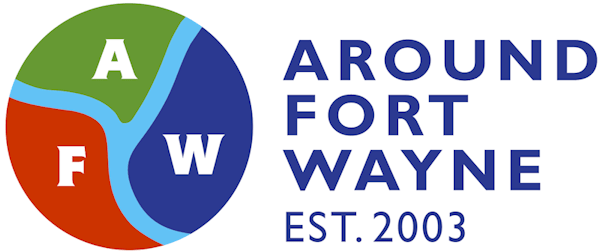
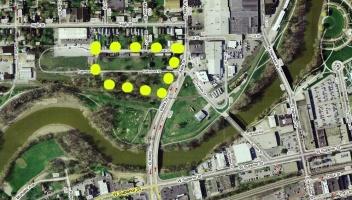
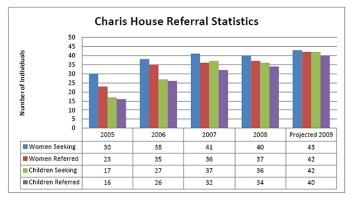
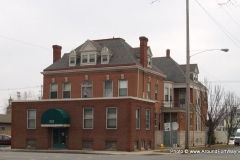




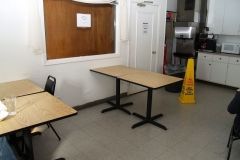
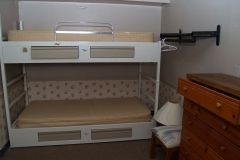





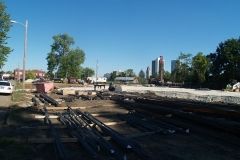


The part about Mr. Hopkins’ letter that bothers me the most is the, “road to nowhere comment”. I live on a half mile private lane that essentially only serves three households. It could be considered a road to nowhere. I would be horribly offended if someone told me that just because my road doesn’t go anywhere, it’s not worth saving. It also seems odd that a homeless shelter would propose vacating people from their homes in order to open said homeless shelter. Anyone else see any irony in this? This is not the right economy to be looking for new place to live. I’m sure the owners will be reimbursed, but what about people who may rent? Anyhow, I guess I will leave it at that. Just some things that bug me.
Actually, there are no longer any residences on Fairmount Place. However, there is the property on the west side of the Charis House property that would be cut off if Fairmount Place was partially vacated. I believe it could still be accessed from the west side of it, however, doing this would mean the added expense of building a street into it.
My fault. I thought that with all of the talk of vacating, people were going to be displaced. Still seems like an awful lot of work and effort when there are probably dozens of open plots big enough for their needs in other areas of the city.
No problem, Jeremy. I tend to agree with you, however!
I have been following this issue, and I find the arguments by the Wells Street merchants without merit.
1. River front development: How long has this area been vacant with the lot in question litter-strewn and overgrown? As long as I can remember. River front development is not a terribly viable option for any land along the St. Marys if you are at all familiar with the soil condition and the flooding issue.
Most of the river banks in Fort Wayne are hidden behind levees, berms, and walls. And if you don’t believe me, just try and find an area where you don’t have to climb up to a walkway or greenway to see the river. That is why I have been fighting so hard for the last four or five years to prevent a flood wall along Thieme Drive. It is truly one of the last areas in the city where you can actually see the river as you jog, bike, or drive on it.
2. Historic area rebirth – the Wells Street corridor is not an historic district. Drive along it and you will see a number of buildings that need repair. You will also see a variety of buildings from modern looking to older styles. To intimate that this area is historic in nature and is on the verge is rebirth is misleading. And to state that the Charis House structure would be out of place is disingenuous given the range of buildings already located on the corridor.
In my neighborhood – West Central- we have buildings that don’t necessarily fit in. Look at the MRI building located on the St. Joe property. It is far from historic looking in nature.
As to the property on the west side, it is accessible from Commerce Drive, which runs to the north of the Charis House property. Commerce Drive is also a street in disrepair. Again, go look at it. It is lined with Quonset-hut looking buildings that are dilapidated. Why haven’t the Wells Street merchants been concerned about this area before now?
It seems odd to me that now, all of a sudden, the issue of development, in particular river front development, rears its head when the Fairmount Place and Commerce area has looked horrible for quite some time.
Do I think it is a NIMBY situation? Yes, I do.
In response to Charlotte’s comment:
The Wells Street Area Merchants have been busy for the last three years, volunteering our time, in between running our businesses, sitting on boards, and raising our families. During this time we have also worked extra hard to get much needed and deserved street improvements that will be completed this fall. We have had to volunteer our time to work with city staff to write new corridor zoning and commercial code enforcement. During that time we also managed to squeeze in a public art project along the corridor. So I would just like to say Charlotte, give us a break! We are killing ourselves to save our business corridor. We are trying to breathe life into the downtown for our community, not for one entity! Charis house has turned their nose to dozens of oportunities for reuse of existing buildings-some of them would have been free! $500,000.00 invested into an existing building for reuse is alot of dough. But the mission of Patty Crisp is to build a brand new, state of the art homeless shelter, to be a model for communities across the nation. Really? Wow, you probably thought it was about housing the homeless? They could be doing that right now if they would get off their high horse and consider reusing an existing building. That is what plan-it-allen, and neighborhood cdaps claim we should be doing. The proposed institution is over 30,000 square feet, Charis house claims they can be ready for residents in Nov.-8 months? What kind of quality construction will this giant institution be built with? Sounds fishy to me.
I appreciate your comments, Charlotte. But, I must respectfully disagree with you on several points.
Should we forgo riverfront development because the rivers are hidden behind levees, berms and walls? Perhaps someone should tell the Fort Wayne Outfitters about that. They opened their business in a location with a levee between them and the River. You have to walk up, over and then down a steep grade to reach the river – and yet, people do this. They are building a business that rents kayaks and I believe canoes for use on the river from the dock they have created at the foot of a levee.
Riverfront development does not necessarily mean on the river’s banks which I’ll admit was my first thoughts about this subject. However, the more I thought about it, the more I realized it does not have to be on top of a river to be considered riverfront. Besides, if we limit our imagination and talent because we can’t see the hidden rivers, then riverfront development is a non-issue.
Read some of the comments submitted here regarding possible uses for this property. I might add that one of my first thoughts was of a photograph Gianni Longo had shown during the North River Now. It was of a European city that had a river heritage. They had created small channels that carried river water through the sidewalks and streets 24/7, 365, through parts of their cities that had a river heritage. While the area it ran through was not directly on the river banks, it still was able to feel connected and give a sense of that heritage. Longo worked this idea into the North River Now discussion and proposals. Something similar could work in this area as well.
I have sat in too many meetings and charrettes where the resounding consensus called for activities and or development of our riverfronts. Engineering provides many possibilities today that didn’t exist 10, 20, 30 or even 100 years ago. Fifty years ago, Parkview Field would probably not have been possible simply because slurry wall technology did not exist. My point is, don’t limit our conception of riverfront development due to perceived distances/obstacles.
I don’t believe I’ve ever said the area is a historic district – because I do know the distinction. Just because a neighborhood does not meet the criteria needed to make it a historic district does not necessarily mean it is not historic in nature. It is historic in the broad sense that Wells Street existed first as a Native Indian foot path which eventually became the Lima Plank road (one of the first) in 1848. Wells Street has been considered a major commercial corridor since it’s annexation into Fort Wayne in 1871. There is a lot of history in the area that Wells Street has played a part in.
As far as the area not being on the verge of rebirth, I cannot disagree more. True, the area has not seen much improvement since the last major infrastructure and beautification projects in the 1980s. In fact, many of those improvements now need improvement themselves.
The reason I say it’s on the verge of rebirth, is that this summer, the Wells Street Corridor Businesses in tandem with the City, has planned streetscape improvements to the corridor. A new logo will also be unveiled for the group which will be featured throughout the corridor on signage displays. Several of the buildings have recently received façade improvements and more are on the way. This, along with the newly reactivated association will undoubtedly spark a rebirth. When people begin to notice positive changes in their neighborhood, they inevitably pick up the ball and join the improvements and give the movement momentum.
As for the Fairmount Place property looking horrible for quite some time, let me point out that the Charis House has owned the property for two years now – if I understand correctly. In two years, what has been done? If they will be such good neighbors, wouldn’t it have made sense to clean the property up a bit? Litter and trash removal are the least cost-intensive items that could have been done. As far as the Wells Street merchants not being concerned before now, I can tell you there are several merchants in that area that have been concerned for a number of years. But a few unorganized business owners are not going to accomplish much of anything.
Yes, there are different styles and ranges of buildings in the corridor. However, the point is that the proposed development does not fit in with the plans that have been developed by the neighborhood association and adopted by the City in regard to future development. The CM5 zoning classification was written specifically for the Wells Corridor. The Charis House development does not fit with CM5 zoning. Hence part of the discussion in Council regarding whether or not the development was allowed by the property’s current zoning classification. (The property is currently IN2.)
If the Council truly caved into the arguments, they would have voted Tuesday night on the vacation request. Instead, they deferred making a decision to allow more information to be gathered and more discussion to be had. While this was not outright support for the Charis House, it certainly was better than defeating the request with no chance of reversal for two years.